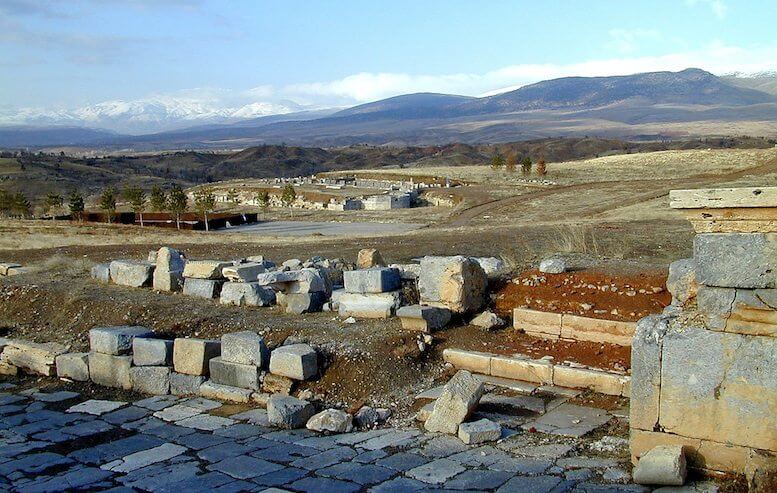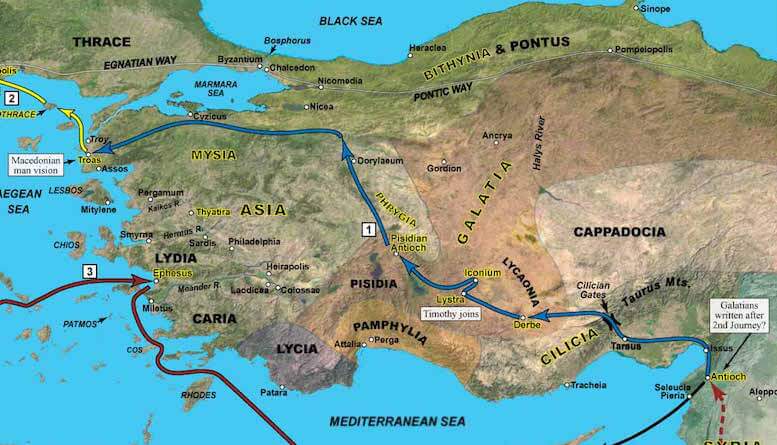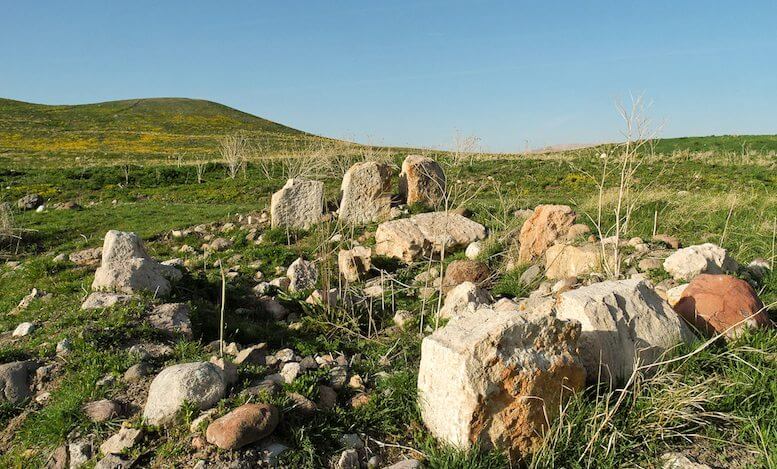I had lunch with a young man who nursed serious doubts about the Bible. He raised objections. I offered answers. After each exchange, he would shake his head and say, “I just can’t believe that’s true.”

(Photo: Pisidian Antioch cardo with Church of St Paul. Courtesy of the Pictorial Library of Bible Lands)
“What if I answered all of your questions to your satisfaction?” I finally asked. “Would you believe in Jesus then?” He thought for a moment, and then looked me in the eye. His answer surprised me.
“No, I wouldn’t.”
In truth, many people demand evidence for truth they never intend to accept. Their problem isn’t a lack of truth. It’s something else.
I have discovered that biblical geography can help destroy our doubts about the Bible.
The Real Problem
For the person already convinced the Bible is false, their problem isn’t a lack of evidence—but a suppression of it (Romans 1:18-20). These kinds of doubts are nothing new.
Nineteenth-century archaeologist William Mitchell Ramsay began his career with the assumption that the book of Acts contained careless, geographical errors written by someone ignorant of Asia Minor (Anatolia or modern-day Turkey). Many liberal scholars assumed Acts was written in the second century, and so Ramsay believed no one could write with accuracy about places where events had occurred a hundred years earlier.
He set out to disprove Scripture, but after Ramsay traveled throughout Asia Minor, he altered his position. Why? He found the geography presented in Acts accurate in every detail.
You may press the words of Luke in a degree far beyond any other historian’s, and they stand the keenest scrutiny. —William Ramsay

(Paul’s Second Missionary Journey through Asia Minor. Map courtesy of Satellite Bible Atlas)
Although God has no problem proving Himself, He knows that proof only goes so far. For when proof removes people’s excuses, they must then respond to the truth with belief.
“Unless I see,” said doubting Thomas, “I will not believe” (John 20:24-31). Thomas wasn’t the only skeptic in the bunch. Many, if not most, of Jesus’ disciples struggled with doubts and uncertainty—even after the resurrection. Jesus did all He could to affirm their faith and dispel their doubts (Matthew 28:17-20; Luke 24:38-39; Acts 1:3).
But the believing part He left up to them—just as He does with us.
What about Our Own Skepticism?
Do you ever find yourself waiting for God to prove something He has already promised? What for?
Hasn’t God already proven Himself faithful in your life every day of every year, even during those times of deepest doubts and discouragements? Someone once said:
God has put enough into this world to make faith in Him a most reasonable thing, but He has left enough out to make it impossible to live by sheer reason alone.

(Photo: Lystra in Asia Minor, where Paul went in Acts 16. Courtesy of the Pictorial Library of Bible Lands)
While proof may help our faith along, it never believes for us. Whether we face doubts about the geography of Acts, the provision for our groceries or the salvation of our souls, our responsibility remains the same: we must respond to the truth God has revealed by believing it.
We can save ourselves a lot of time (and grief) if we will just believe right now what God will ultimately prove.
I love Jesus’ words to Thomas, because they are His words to us as well:
Blessed are they who did not see, and yet believed. —John 20:29
(I have posted a list of recommended resources for Christian apologetics.)
Tell me what you think: What helps you with doubts about the Bible? To leave a comment, just click here.
